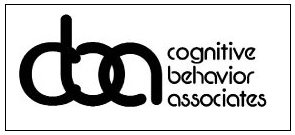It is no surprise that adults are concerned about their appearance. Proper grooming and hygiene are essential for good health and a level of self-confidence that allows one to interact and make connections with fellow adults. Unfortunately, people sometimes become overly concerned with their appearance and move past a healthy level of concern for their image. In these cases, they often face a more serious mental health issue called body dysmorphic disorder.
Body dysmorphia or body dysmorphic disorder (BDD) is a mental health condition wherein one is obsessively preoccupied with one or more perceived defects or flaws in their physical appearance. These flaws are often minor or even unnoticeable to others, but the extreme distress they cause BDD patients interferes with their ability to properly function in various areas of life. BDD patients are usually treated through cognitive behavioral therapy groups. Take a close look at the symptoms and causes of body dysmorphic disorder so you can distinguish between standard concern for your appearance and body dysmorphia.
Symptoms of Body Dysmorphic Disorder
The most prevalent symptoms of BDD are:
- Being overly preoccupied with a perceived flaw in appearance that seems minor or even unnoticeable to others
- Believing you have a physical defect that makes you ugly or deformed
- Believing that others mock you or make fun of you because of your physical appearance
- Manifesting habitual or uncontrollable behaviors in an attempt to hide or fix the perceived defect (e.g., taking excessive time fixing one’s hair, constant grooming, and skin-picking)
- Spending extended periods looking at your reflection
- Hiding the perceived flaws behind makeup and clothes
- Constantly comparing yourself with others and feeling inferior because of the defect or flaw
- Asking for constant reassurance from others while being unable to accept their positive feedback
- Avoiding social activities due to perceived flaw or defect
- Undergoing unnecessary plastic surgeries
- Experiencing anxiety, depression, and suicidal ideation
- Preferring to stay home, especially during the daytime
This obsessive preoccupation with one’s physical appearance usually concentrates on one or more physical features. Though the preoccupation may shift to different areas of the body over time, the most common physical focuses associated with body dysmorphic disorder are the following:
- Face and perceived problems of the face (e.g., nose, pimples, wrinkles, acne, and other blemishes)
- Hair and whether it is thinning or balding
- Skin and veins
- Genitalia
- Tone and size of muscles
Causes of Body Dysmorphic Disorder
Although the exact cause of BDD is not known, researchers have named some factors that may contribute to its development.
Abuse or bullying
Abuse and bullying are both traumatic experiences that may lead one to have a negative self-image and lead them to obsess about their physical appearance. One study found that 38% of 50 BDD patients experienced some form of abuse during childhood.
Fear of rejection
People who are worried about rejection or ostracization tend to develop thought patterns that may eventually lead to BDD.
Perfectionism or comparing oneself with others
Media has a significant impact on many aspects of life. Television, movies, magazines, and social media foster unrealistic beauty ideals, which unfortunately create feelings of inadequacy in some people. When one desires to have a subjectively perfect face or body but cannot achieve it, they may develop BDD.
Genetics
There is evidence that BDD runs in families. However, it is unclear and complicated to determine if the symptoms are inherited or learned.
Other Risk Factors
BDD can be caused by a combination of these factors, including abnormal levels of serotonin, abnormal brain function, anxiety, and depression.
Treatment for BDD
The pressure to look more attractive is ever-increasing as today’s society continues to be bombarded with unattainable beauty standards. Fortunately, this body dysmorphic disorder can be treated. Cognitive Behavioral Therapy for body dysmorphia is often the treatment of choice for BDD patients because the stated effectiveness of the treatment is the only one that is supported by research and experience.
The benefits of cognitive behavioral therapy for BDD are as follows:
- It helps patients develop a positive and more realistic self-image.
- It helps patients recognize that perceptions of body image differ from person to person and are usually influenced by one’s experiences and societal or cultural standards.
- It aids patients in developing a more holistic view of themselves and cultivating a balanced and healthier self-image by challenging patients’ automatic thoughts.
Take a Stand Against Body Dysmorphic Disorder
If you recognize the symptoms of BDD in someone close to you, be a good listener and do not invalidate their feelings. Remember, even if you do not see what they see, their perception is real to them. The best way to help is to encourage them to seek treatment and support from mental health professionals. You may also join them in cognitive behavioral therapy to show additional support.
If you recognize the symptoms of BDD in yourself, reach out to a mental health professional at once. When facing any mental health problem, a timely diagnosis is vital so that you can start with the proper treatment before your symptoms get worse. You can also ask a trusted family member or a close friend to accompany you to the clinic. Take control of your body dysmorphic disorder and consult with a mental health professional today.

